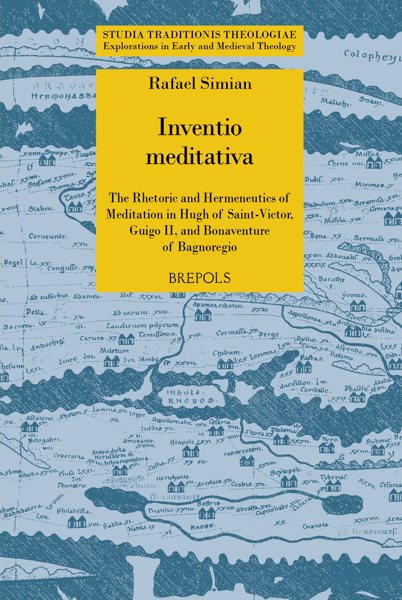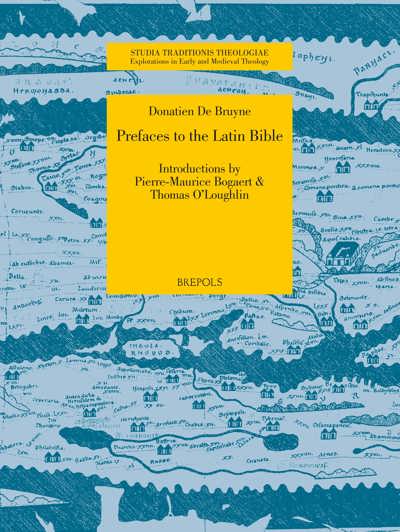
- Pages: 221 p.
- Size:156 x 234 mm
- Illustrations:3 tables b/w.
- Language(s):English, Latin
- Publication Year:2025
- € 70,00 EXCL. VAT RETAIL PRICE
- ISBN: 978-2-503-61835-7
- Paperback
- Available
- € 70,00 EXCL. VAT RETAIL PRICE
- ISBN: 978-2-503-61836-4
- E-book
- Available
For Bonaventure, the biblical account of creation contains Scripture itself and the whole world too. Genesis was the giant that engendered all things
Ruben Martello graduated with a PhD in theology from the University of Nottingham. He is a priest and professed member of the Friars of St. Francis, and is appointed to St. Bernadette's Catholic Church, Dundas Valley in the Diocese of Parramatta in Australia.
This volume offers a fresh approach to the structure of Bonaventure’s thought. Ruben Martello argues that Bonaventure employs the Genesis creation account as an overarching framework and fecund source for understanding nature, theology, and even Scripture itself. Beginning with Bonaventure’s view of the literal meaning of Scripture, the reception of the hexaëmeron is traced chronologically in a number of major theological works. Bonaventure is interpreted in light of the hexameral commentarial tradition like Augustine’s De Genesi ad litteram, and filtered through Dionysian and Victorine inspired hermeneutics. It is proposed that reading Genesis in Bonaventure may clarify a number of contemporary disputed theological, exegetical and epistemological concerns. This study also unpacks the Bonaventurian understanding of the distinctive senses of the 'image' and 'likeness' of God, aiding in the articulation of a rich theological anthropology.
Preface
Introduction
Outline and Objectives
A Profile of Bonaventure
Rationale and Vantage Point of the Study
Methodology
Sacra Scriptura: Bonaventure’s Exegetical Method
Augustine on the Hexaëmeron
Bonaventure’s Responses to Augustine
1. Omnium Artifex and De Reductione Artium ad Theologiam
The Commendation of Scripture: Omnium artifex docuit me sapientia
The Resumption: De reductione artium ad theologiam
Concluding Remarks
2. The Breviloquium
The Prologue
Part One: On the Trinity of God
Part Two: On the Creation of the World
Part Three: On the Corruption of Sin
Part Four: On the Incarnation of the Word
Concluding Remarks
Part Five: On the Grace of the Holy Spirit
Part Six: On the Sacramental Remedy
Part Seven: On the Repose of the Final Judgment
3. Itinerarium Mentis in Deum
An Ascending Hexaëmeron: Prologue and Chapters One and Two
Image and Likeness: Chapters Three and Four
Moses, Jesus and the Sixth Day: Chapters Five and Six
Conclusion
4. The Reception of Genesis from 1259–1273
Collationes in decem praeceptis
Apologia pauperum
Conclusion
5. Collationes in Hexaëmeron
Introduction
The First Vision: ‘Understanding Implanted by Nature’
The Second Vision: ‘Understanding Elevated by Faith’
The Third Vision: ‘Understanding Instructed by Scripture’
The Fourth Vision: ‘Understanding Suspended by Contemplation’
Excursus – The Importance of St. Francis in the Collationes in Hexaëmeron
6. The Growth of Genesis in Bonaventure’s Works
Introduction
The Seminal Reasons
The Function of Scripture in Light of the Seminal Reasons
Concluding Remarks
7. The Similitudo Dei and Angelic Exegesis
Introduction
The ‘Image and Likeness’ of God (Genesis 1:26)
The Restoration of Divine Likeness through Exegesis
Concluding Remarks
8. Concluding Matters
Summary
The Limitations and Strengths of Bonaventure’s Approach
A Consideration of Objections
Conclusion
Bibliography




